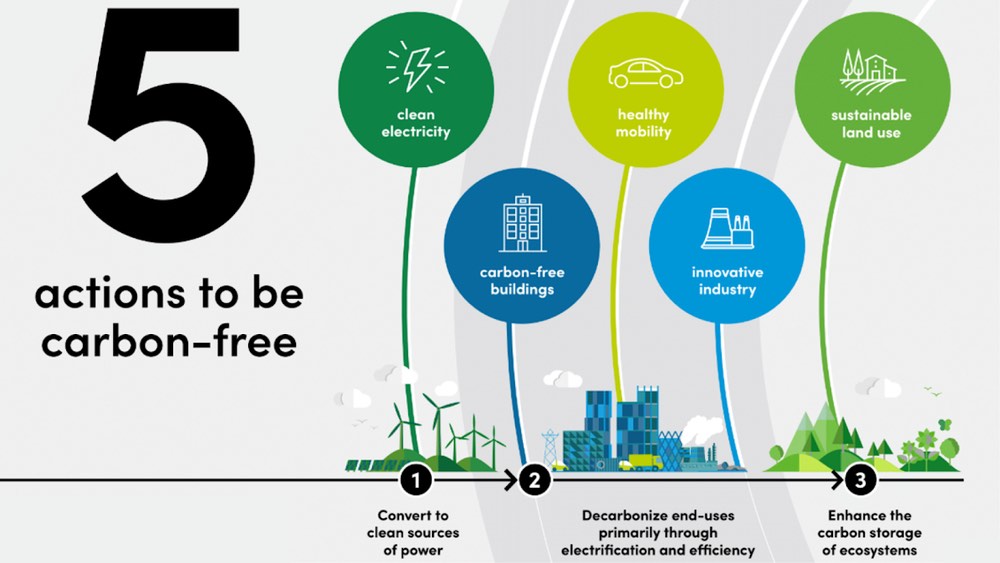
Paris Takes More Than Nations
Now that the United States has officially reentered the Paris Agreement, every nation in the world is working together on climate actions to limit global temperature rise. That is undoubtedly great news because national-level commitments are critical to the success of these efforts.
At the same time, while national governments often receive much of the attention, they are only one part of the story for what is necessary to combat climate change. It has become increasingly clear that this fight needs to be an all-hands-on-deck effort involving a “whole-of-society” groundswell with the participation of all levels of governments, businesses, civil society, academia, and more.
Over the past few years, we have seen one example of this trend in the United States. Here, spurred by the federal government’s plans, announced in 2017, to withdraw from the Paris Agreement, thousands of state, local, and non-governmental leaders united to help ensure the country continued making progress on meeting its obligations under the Agreement. In total, the number of entities committing to this cause grew to account for nearly two-thirds of the US population and 70 percent of the US GDP.
This is certainly not a story specific to the United States. Throughout the world, subnational climate action has grown. There are alliances for subnational climate action in Argentina, Brazil, Japan, Mexico, South Africa, and Vietnam, and there are many other examples of efforts by subnational governments to address climate change.
Despite the United States’ renewed commitment to the Paris Agreement, it has never been more important for governments at all levels to keep working toward a zero-carbon future. As global greenhouse gas emissions continue to grow, so does the urgency for taking the actions necessary to confront the climate crisis. Solutions of all shapes and sizes, including solutions from subnational governments, are welcome and needed.
Regions Take Action
In that spirit, RMI’s recent Regions Take Action guide provides valuable tools for state, provincial, and regional governments that want to implement climate policy. The Under 2 Coalition, a global community of state and regional governments committed to ambitious climate action, was an essential partner in putting this guide together and informing in-depth case studies of high-impact actions.
The report focuses on transformative actions that regions can take to decarbonize in five sectors: electricity, building, mobility, industry, and land use. And it shows how the wide-ranging benefits unlocked by targeted climate actions—climate benefits aside—make them worthwhile in their own right.
For many years, RMI has been working to help strengthen and scale the work of subnational governments. Our Carbon-Free City Handbook and Carbon-Free Regions Handbook both outlined real-world policy examples that other jurisdictions can emulate. Regions Take Action, the latest report in that series, takes a slightly different approach, showing how the economic and social benefits of climate policy extend far beyond environmental gains and provide a means to address multiple societal challenges simultaneously.
Climate and energy intersect with many aspects of our lives, and regional governments are increasingly realizing that well-designed climate policy can be a tool for achieving wide-ranging outcomes. Indeed, by accomplishing numerous goals through a single action, climate policies can provide exceptional returns on investments. Sometimes, climate solutions are not really about greenhouse gases at all. Instead, they are much more about economics, equity, and well-being.
For example, one study estimates that decreased air pollution resulting from climate action to meet a 1.5°C scenario would lead to approximately 153 million fewer premature deaths worldwide. In the United States alone, the economic value of health and labor benefits from meeting the goals of the Paris Agreement and keeping temperature rise below 2ºC is estimated at a massive $37 trillion over the next 50 years.
The Regions Take Action guide highlights policies to revitalize the industrial sector, revolutionize electricity generation, scale carbon markets, bolster electric vehicle production, and reinvigorate the building stock. These case studies provide models for other governments to understand what has already been accomplished, why jurisdictions did what they did, and how they were successful in accomplishing a multitude of economic and social objectives. With that information, leaders can consider how similar policies and approaches might help them achieve their own unique goals.
Knowing the urgency of many economic, social, and environmental goals, we need regional climate action to grow on an unprecedented scale. First out of the gate should be the types of proven, ready-to-implement, no-regrets solutions outlined in the Regions Take Action guide. Share this guide with your state, provincial, or regional government and ask them to help realize the benefits of a clean energy economy for all.
